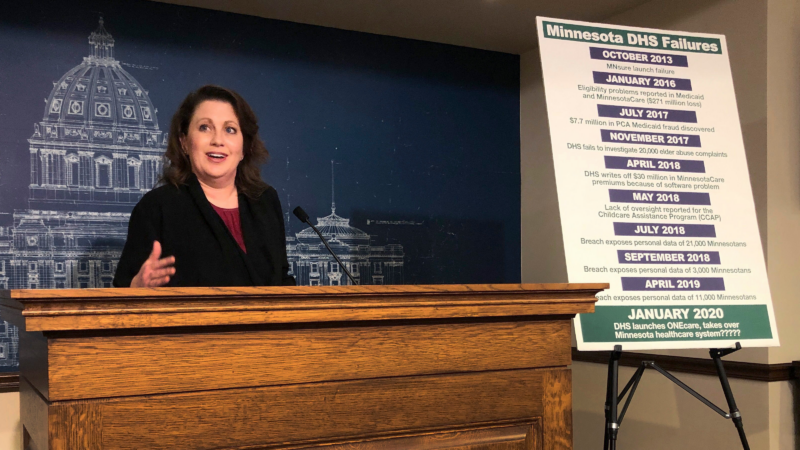Shackled for weeks: Federal report finds abuse of restraints in prisons
One person died in federal prison after being kept in restraints for more than two days. Another was held in restraints so tight that, afterward, part of a limb had to be amputated. A third person was confined in restraints for 12 days, then 30 days and then again for 29 days.
These abuses are outlined in a new report from the Justice Department’s Office of the Inspector General (OIG), which is highly critical of the federal Bureau of Prisons’ (BOP) use of restraints on prisoners.
The report concludes that federal prison officials violated their own rules, shackling prisoners to beds and chairs for hours — or even days — sometimes using restraints on both wrists and ankles. Additionally, they violated a separate rule that prohibits the use of restraints as punishment.
In response to the OIG’s findings, the BOP stated it agreed with the report’s recommendations and would revise its policies and practices moving forward.
The report follows an investigative series in recent years by NPR, in collaboration with The Marshall Project, which exposed abuse in federal prisons, including the overuse of restraints and shackles so tight that prisoners report scarring and permanent injury.
The OIG reviewed six years of BOP records and found thousands of instances of abuse. Those included “thousands of incidents of inmates held in restraints for 16 hours or longer, hundreds of which were held in restraints for more than 24 hours and some for over a week or weeks.” However the investigators noted that their work was limited by inadequate record-keeping at prisons.
“Clearer and more robust policies would assist the BOP in protecting inmates from abusive treatment, shielding staff from false allegations, deterring misconduct by staff, and holding staff who engage in misconduct accountable,” says the report from William Blier, acting inspector general, to William Marshall, the new director of the Bureau of Prisons.
The report does not identify specific prisons or prisoners nor disclose their gender, but some of the details are disturbing.
The person who died had been “placed in a restraint chair with restraints on both wrists and both ankles for more than 2 days,” according to the report. Less than two hours after being released, they were sprayed with pepper spray “following an alleged altercation with a cellmate” and placed back into the restraint chair. Five hours later, the prisoner was found unresponsive and later pronounced dead.
An autopsy concluded that the person died from a painful blockage of blood flow, a severe result of sickle cell disease, which was complicated by being pepper sprayed and placed in “prolonged restraint.”
BOP rules allow the use of restraints when a prisoner’s behavior poses an immediate risk to themselves or others. But the rules explicitly prohibit restraints from being used “as a method of punishing an inmate” or in “a manner that causes unnecessary physical pain or extreme discomfort.”
NPR’s reports with the Marshall Project revealed similar misuse of restraints. At the Special Management Unit in the federal penitentiary at Thomson, Ill., prisoners described what they called their “Thomson tattoos,” the lasting and sometimes permanent marks on their wrists and ankles from restraints applied too tightly and left on too long.
At the federal prison at Lewisburg, Pa., NPR and The Marshall Project reported that Sebastian Richardson was punished for objecting to being placed with a new cellmate he feared. He was put in restraints for 28 days, during which time he was uncuffed only once. As a result, he was unable to use the toilet and often forced to sleep on the floor of his cell.
Following reports of widespread abuse, the Department of Justice shut down the disciplinary units at both Lewisburg and Thomson.
In response to the memorandum from the inspector general, the BOP stated that it “is committed to addressing these issues and implementing meaningful improvements,” and welcomed the report’s recommendations as “a crucial opportunity to enhance agency practices and ensure the humane treatment of all inmates.”
A BOP spokesperson told NPR that the agency cannot comment further at this time because it is still completing a review of the inspector general’s “multiple recommendations and requested revisions.”
However, the BOP informed the inspector general it would take steps to prevent the prolonged use of restraints, and conduct more frequent checks and thorough documentation of prisoners in restraints.
Trump administration says it’s freezing child care funds to Minnesota
President Trump's administration announced that it's freezing child care funds to Minnesota after a series of fraud schemes in recent years.
Flu cases are surging and rates will likely get worse, new CDC data shows
Flu season is off to a rough start this year, according to new CDC data. The virus is spreading faster than in previous years and the surge is likely to get worse. Here's what you need to know.
10 passion projects that stood out at the movies this year
NPR critic Bob Mondello narrows down his favorite movies of the year — the ones that made audiences vibrate.
Judge orders Trump administration to continue to seek funding for the CFPB
The order is the latest in a complex legal battle over the fate of the Consumer Financial Protection Bureau, a watchdog agency.
In a year of steep challenges, there were still shining moments in global health
The Trump administration's deep cuts in U.S. foreign health aid had a devastating impact. Yet there were achievements of note in spite of it all.
An escalation in Yemen threatens to reignite civil war and widen tensions in the Gulf
Saudi Arabia bombed Yemen's port city of Mukalla, targeting a shipment of weapons from the United Arab Emirates for separatist forces. The UAE later said it would withdraw its forces from Yemen.








